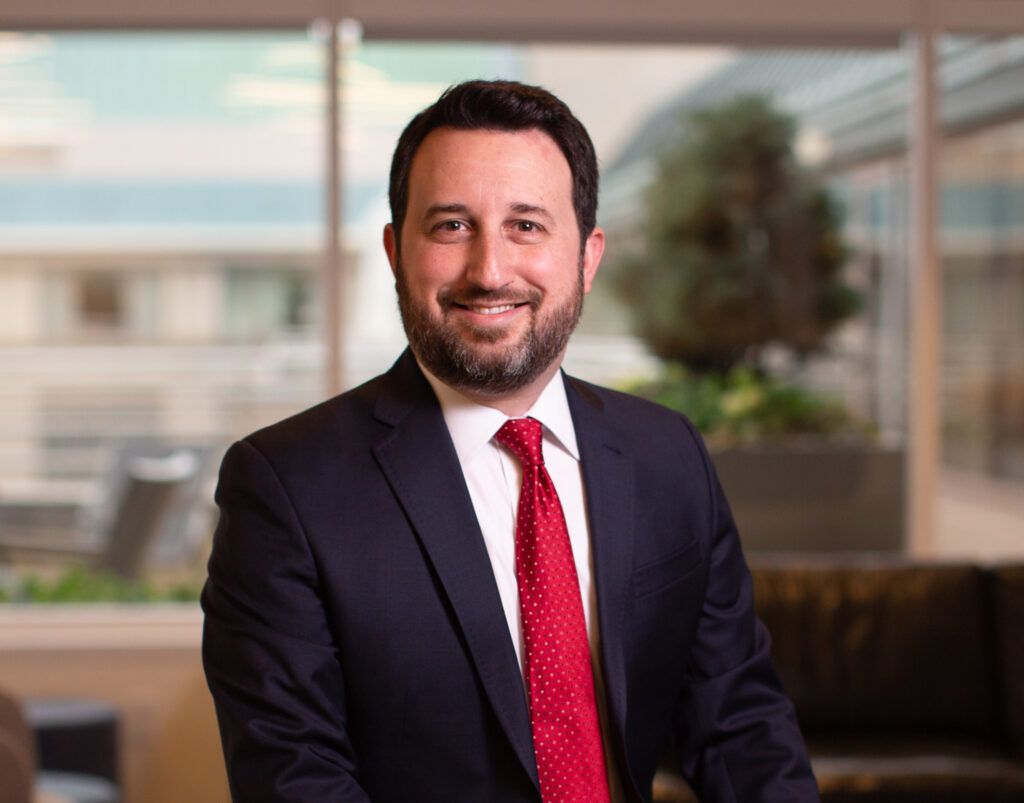By Bernard Bell and Tab Turano
A recent Law360 guest article by Adam Fleischer argued that confusion has seeped into a string of recent decisions holding that commercial general liability, or CGL, policies cover the defense of opioid-related lawsuits.

There are now five decisions, including two appellate decisions, holding that the allegations in the opioid complaints — including the public nuisance claims — are “because of” bodily injury, and therefore potentially covered under standard consumer general liability policy language, triggering the duty to defend.[1]
Conversely, no decision that remains good law holds that insurers need not defend opioid complaints. There is no confusion. The courts have not blurred the distinction between negligence-based claims for public nuisance and those for direct bodily injury: They have addressed this issue squarely and repeatedly found that this distinction makes no difference concerning the duty to defend.
Insurers are correct that the public nuisance claims in the opioid complaints are a frontal attack on foundational tort principles of causation, but that does not mean the claims are not covered. Insurers should be shoulder-to-shoulder with their policyholders fighting these claims, which threaten to transform our legal system into an extortion racket.
Instead, the insurance industry has abandoned opioid defendant policyholders in their time of greatest need. Some insurers have gone so far as to line up against their policyholders and parrot the plaintiffs’ attacks as a basis to deny coverage. Courts are having none of it and are uniformly enforcing the duty to defend.
This article will: (1) review standard-issue CGL coverage for damages “because of” bodily injury; (2) explain why opioid-related lawsuits seek damages “because of” bodily injury; and (3) debunk the myth that opioid suits must assert individual bodily injuries in order to be covered.
CGL policies cover claims for damages “because of” bodily injury.
Standard CGL policies require insurers to pay “those sums that the insured becomes legally obligated to pay as damages because of bodily injury.”[2] “Bodily injury” is defined to mean “bodily injury, sickness, or disease sustained by a person, including death resulting from any of these at any time.”[3]
CGL policies provide that damages “because of” bodily injury include not simply damages claimed directly by an injured person but also damages “claimed by any … organization for care, loss of services, or death resulting at any time from the bodily injury.”[4] These are standard-issue coverage provisions.
Opioid-related lawsuits seek damages “because of” bodily injury.
The plaintiffs in the opioid lawsuits are typically governmental entities alleging that opioid use has led to a “dramatic increase in opioid abuse, addiction, overdose, and death throughout the United States.”[5] These entities seek damages for emergency medical treatment, detoxification, addiction treatment and recovery services related to opioid abuse by their citizens.[6]
Although the plaintiff governments assert various causes of action (including negligence and public nuisance), their claims are “effectively claims to recoup the costs of medical expenses,” services, and treatment for opioid abuse and addiction.[7]
As such, the opioid lawsuits constitute claims for damages “because of ‘bodily injury'” under the plain language of typical CGL policies, and trigger insurers’ obligations to defend policyholders against such claims.
Indeed, a string of recent decisions have consistently agreed that opioid lawsuits seek damage “because of” bodily injury, and have required insurers to defend policyholders against these claims.[8]
These decisions have involved policyholders who are sued for allegedly improper distribution and dispensation of prescription opioids, but the reasoning applies as well to policyholders sued in their role as manufacturers.
In reaching their decisions, all these courts rejected the argument that opioid lawsuits do not seek damages “because of” bodily injury because the plaintiffs do not seek damages for their own bodily injury, but instead seek damages because of the bodily injuries of their citizens.
This, according to the courts, is a distinction without a difference given the relevant policy language. CGL policies require only a causal connection between the bodily injury and the policyholder’s complained-of conduct.[9] Such causal connection is met where the governments seek damages as a result of costs and expenses incurred from providing treatment and services to citizens affected by opioid addiction.
This conclusion is further bolstered by the policy provision specifying that “damages because of ‘bodily injury’ include damages claimed by any person or organization for care, loss of services or death resulting at any time from the bodily injury.” An organization cannot sustain bodily injury; therefore, the express language of CGL policies refutes any notion that coverage is limited to claims by individuals seeking damages for their own bodily injuries.
Consider the following hypothetical: If a citizen suffered bodily injury due to his drug addiction and sued a policyholder for negligently distributing or dispensing opioids, even the insurers acknowledge that their policies would cover such a suit.[10]
Now suppose that the injured citizen’s mother spent her own money to care for her son’s injuries.[11] The mother’s suit is also covered, even though she seeks her own damages (the money she spent to care for her son), not damages on behalf of her son (such as his pain and suffering or lost wages).[12]
Legally, the result is no different because the opioid plaintiffs are governments, instead of mothers.[13] The insurers’ distinction thus makes no difference; CGL policies require insurers to defend against these opioid-related claims.
There is no requirement for claims to allege individual bodily injury to be covered.
Fleischer’s claim that the recent line of decisions “manufacture[s] insurance coverage where it was not intended” is based on a series of mischaracterizations and misperceptions.
First, Fleischer rewrites the language of CGL policies. Nothing in the language of CGL policies limits coverage to claims alleging bodily injury to specific individuals. Indeed, Fleischer’s conclusion is supported only by its repeated insistence that such policies cover damages for bodily injury rather than damages because of bodily injury.
While this mischaracterization may seem trivial, courts have recognized that policies covering damages because of bodily injury afford broader coverage than policies covering damages for bodily injury.[14] And, consistent with this broad coverage, courts have properly concluded that the costs and expenses incurred by governmental entities as a result of sickness, disease, and death of their citizens are indeed because of “bodily injury.”
Second, in effort to attack the recent decisions finding coverage, the insurer article miscasts the nature of the claims and relief sought in the opioid lawsuits. For instance, Fleischer asserts that the opioid plaintiffs “specifically have pled that [they] do not seek damages for death, physical injury to a person, or emotional distress.”
But, as the Delaware Superior Court explained in Rite Aid Corp. v. ACE American Insurance Co., this artful pleading is an attempt to avoid application of the Ohio Product Liability Act which abrogates product liability claims.[15]
Even if the opioid lawsuits do not seek compensatory damages directly for individuals’ death or physical injury, as abrogated by the act, the lawsuits undisputedly allege physical harm from opioid addition which constitutes “bodily injury,” and seek damages because of such bodily injury as required to trigger defense coverage.[16]
In short, the plaintiffs’ attempts to disavow damages for death or physical injury, taken in proper context, do not support insurers’ attempts to deny defense coverage for the opioid lawsuits.
Similarly, Fleischer’s suggestion that the opioid lawsuits simply seek “economic losses paid by governments for the unreasonable interference with a public right” is misguided. The lawsuits seek costs and expenses associated with government programs and services, and these programs are directly aimed at providing emergency, health and other services to individuals suffering from opioid abuse and addiction.
In other words, the services and programs, and the costs to fund them, are because of bodily injury to citizens. Once again, this triggers defense coverage under the broad language of CGL policies.
In sum, there is no confusion here: CGL policies cover the defense of opioid-related lawsuits because the suits seek damages “because of” bodily injury, as the case law clearly and consistently establishes. The courts have not blurred the distinction; they’ve addressed it — correctly. Any insurer that tries to tell you otherwise is not telling you the truth.
This article was also published in Law360.
[1] See, e.g., Cincinnati Ins. Co. v. H.D. Smith, L.L.C., 829 F.3d 771 (7th Cir. 2016); Giant Eagle, Inc. v. Am. Guar. & Liab. Ins. Co., No. 2:19-cv-00904, 2020 WL 6565272 (W.D. Pa. Nov. 9, 2020); Rite Aid Corp. v. ACE Am. Ins. Co., No. N19C-04-150, 2020 WL 5640817 (Del. Super. Ct. Sept. 23, 2020); Acuity v. Masters Pharm., Inc., No. C-190176, 2020 WL 3446652 (Ohio Ct. App. June 24, 2020); Cincinnati Ins. Co. v. Disc. Drug Mart, Inc., Case No. CV-19-913990 (Ohio Ct. Comm. Pls. Sept. 9, 2020).
[2] See, e.g., Giant Eagle, 2020 WL 6565272, at *4, *13.
[3] Id.
[4] Id.
[5] Id. at *5, *14.
[6] Id. In addition, some of the opioid plaintiffs are legal guardians asserting claims on behalf of children diagnosed at birth with opioid dependence, known as Neonatal Abstinence Syndrome (“NAS”). Id. at *5. The NAS plaintiffs allege that their children suffer from health conditions resulting from their in utero exposure to opioids and seek damages for ongoing care necessitated by the policyholders’ alleged wrongful conduct in distributing and dispensing opioids. Id. at *5.
[7] See, e.g., Acuity, 2020 WL 3446652, at *6 (citing In re Nat’l Prescription Opiate Litig., No. 1:17-md-2804, 2018 WL 6628898, at *9 (N.D. Ohio Dec. 19, 2018)); Disc. Drug Mart, No. CV-19-913990, at 15 (citing same).
[8] See, e.g., Giant Eagle, 2020 WL 6565272; Rite Aid, 2020 WL 5640817; Acuity, 2020 WL 3446652; Disc. Drug Mart, No. CV-19-913990.
[9] See, e.g., Giant Eagle, 2020 WL 6565272, at *14; Rite Aid, 2020 WL 5640817, at *15; Acuity, 2020 WL 3446652, at *6.
[10] H.D. Smith, 829 F.3d at 774.
[11] Id.
[12] Id.
[13] Id.
[14] Id. (noting that policies covering suits seeking damages “because of” bodily injury provide broader coverage than policies covering suits “for” bodily injury). This is not to concede that the opioid claims do not seek damages “for” bodily injury, but that was not the
language at issue in the five cases cited supra in note 1.
[15] Rite Aid, 2020 WL 5640817, at *13.
[16] Id. at *16.



